The Reasons for 50 Ω and 75 Ω Transmission Lines—And Why You Should Choose Carefully
When RF engineers think about the impedance of their project’s transmission lines, they may automatically assume that these lines all have a nominal impedance of 50 ohms (Ω). That makes sense, as so much of today’s RF design work is based around that value. It’s not an arbitrary number; there are good technical reasons for using 50 Ω.
However, there are also many RF applications where the transmission line impedance has a 75 Ω value. These are mostly related to video signals and cable TV, which includes the many related functions in this large market, such as building-wide distribution amplifiers. To designers and end-users in these areas, 75 Ω is the “normal” impedance, while 50 Ω is the oddball value.
The use of two very different impedances raises some interesting questions. Why are there two standard impedances? Why do they have those particular values? Which is “better,” where, and why? Does using one versus the other really matter and, if so, in what specific ways?
There’s a lot more behind the story of those simple-looking coaxial cables and their connectors than just a solid inner conductor with some surrounding shielding; coaxial cable is actually a precisely dimensioned waveguide for electromagnetic energy (Figure 1).
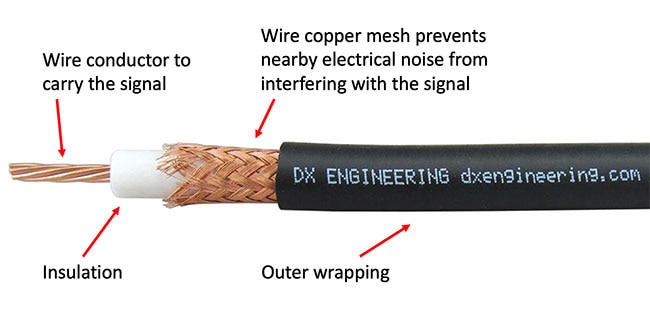 Figure 1: Coaxial cable appears to be conceptually simple, but it is actually the physical implementation of a waveguide for electromagnetic energy. (Image source: Bill Schweber, using source material from DX Engineering)
Figure 1: Coaxial cable appears to be conceptually simple, but it is actually the physical implementation of a waveguide for electromagnetic energy. (Image source: Bill Schweber, using source material from DX Engineering)
The answers to the impedance questions have both historical and technical roots. They begin with the work done by Lloyd Espenscheid and Herman Affel, who developed and analyzed the first coaxial cable in 1929 while working for the legendary Bell Labs. Their goal was to find a transmission medium for propagating a 4 megahertz (MHz) signal (a very wide bandwidth in those early days of long-distance telephony), which was needed to carry about 1000 bandwidth-limited analog voice calls across hundreds of miles. Doing so required a transmission line that could handle both high voltage and high power.
The two researchers analyzed the tradeoffs among key transmission line parameters of attenuation, voltage rating, and power rating (Figure 2).
 Figure 2: Among the key transmission line parameters are attenuation, voltage rating, and power rating. Each has an optimum value at a different impedance. (Image source: https://vk8bn.me)
Figure 2: Among the key transmission line parameters are attenuation, voltage rating, and power rating. Each has an optimum value at a different impedance. (Image source: https://vk8bn.me)
Their analysis looked at the performance of three characteristics as a function of impedance and they found:
1: Attenuation (loss) is largely a function of the dielectric in the cable. For the air-filled coaxial cable which they analyzed, the lowest loss was at about 77 Ω (it is around 50 Ω for some dielectrics, but such cables did not yet exist).
2: The voltage maximum is a function of the intensity of the electric field between the coaxial outer conductor and the inner conductor. For coaxial cable supporting RF signals in the TE10 electromagnetic (EM) field waveguide mode, the e-field has its maximum at around 60 Ω.
3: The power handling capability is determined by the breakdown field and impedance (V2/Z). For air-filled coaxial cables operating below the TE11 mode cutoff frequency, the power transfer is at its maximum at around 30 Ω.
As with most engineering decisions, there is no “ideal” impedance value; instead, the “best” choice involves balancing tradeoffs. The 50 Ω value is a good compromise for power and voltage, such as that output by a transmitter. In contrast, for situations where low attenuation is the primary goal, such as with low-level signals from an antenna or an analog video link, 75 Ω is a better choice.
Further, there’s another reason why 75 Ω is a desirable impedance. The “natural” impedance of a standard half-wave dipole antenna at its resonant frequency is 73 Ω, while the impedance of the widely used folded dipole antenna is 300 Ω. This means that 75 Ω is a near-perfect match for the larger dipole, while it also is easy to provide a close match to the folded dipole using a basic 4:1 balun.
Using different impedances realizes different objectives in a single design and adds another level of complexity. In practice, the difference in loss over a short run of a few centimeters may be negligible. Further, the voltage standing-wave ratio (VSWR) when connecting a 75 Ω cable to a 50 Ω one is 1.5:1, which may be an acceptable non-unity value (in many low or medium power situations, a VSWR below 2:1 is considered acceptable).
Coaxial cables and terminations
Translating EM field theory and analysis into real transmission lines is the function of coaxial cables, most of which have an “RG” designation. RG, or Radio Guide, comes from the original WWII military specification for coaxial cables.
Although there are well over a hundred RG-X varieties, nearly all have either a 50 Ω or 75 Ω nominal impedance. The difference among the many versions relate to their physical size, insulation specifics, shielding type and performance, dielectric material and construction, power rating, environmental ruggedness, fire-related ratings, and other factors. The RG-X number often has a letter suffix identifying a specific non-impedance attribute, as well.
Vendors provide many RG-cable types, usually on large spools. For example, among their many 50 Ω cables, Belden Inc. offers 9223 010100 RG-8/U with a 22 AWG inner conductor made of seven strands of 30 AWG wire on a 100 foot (ft) spool (Figure 3), and 8240 010500 RG-58A (20 AWG solid inner conductor) on a 500 ft. spool (Figure 4). For 75 Ω applications, they have 1694A 010500 RG-6U with an 18 AWG solid inner conductor and the 1505A 010500 RG-59U (both on 500-foot spools) with a 20 AWG solid inner conductor.
 Figure 3: This 50 Ω RG-8 coaxial cable uses a 22 AWG inner conductor made of seven strands of 30 AWG wire. (Image source: Belden Inc.)
Figure 3: This 50 Ω RG-8 coaxial cable uses a 22 AWG inner conductor made of seven strands of 30 AWG wire. (Image source: Belden Inc.)
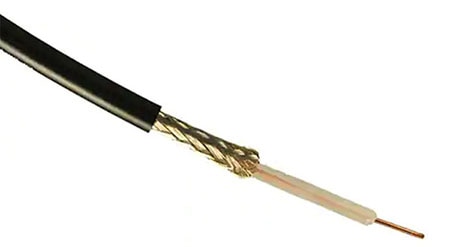 Figure 4: This 50 Ω RG-58 cable has a 20 AWG solid inner conductor. (Image source: Belden Inc.)
Figure 4: This 50 Ω RG-58 cable has a 20 AWG solid inner conductor. (Image source: Belden Inc.)
There’s more to using coaxial cable than just the cable. It needs to be terminated with a connector designed for the correct impedance, as well as the coaxial cable size and shielding. Among the commonly used connectors for 50 Ω coaxial cable is the venerable PL-259, available from Amphenol RF as the 83-1SP-1050 (Figure 5), as well as the wideband Type N, such as the VNS30-2051 from Cinch Connectivity Solutions(Figure 6).
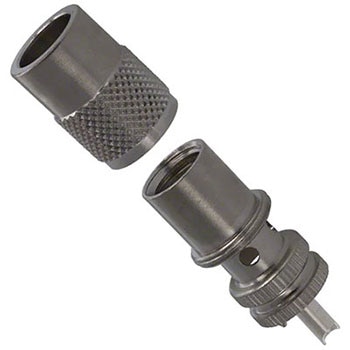 Figure 5: This PL-259 connector for 50 Ω coaxial cable is still in wide use despite its age. (Image source: Amphenol RF)
Figure 5: This PL-259 connector for 50 Ω coaxial cable is still in wide use despite its age. (Image source: Amphenol RF)
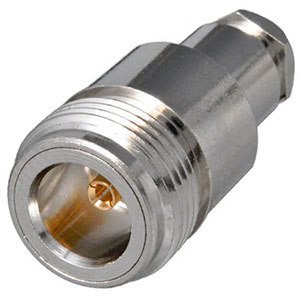 Figure 6: The Type N connector is a newer, wider bandwidth 50 Ω alternative to the PL-259. (Image source: Cinch Connectivity Solutions)
Figure 6: The Type N connector is a newer, wider bandwidth 50 Ω alternative to the PL-259. (Image source: Cinch Connectivity Solutions)
Many 75 Ω systems, especially those in low-cost consumer applications, use the F-Type connector, a good example of which is the 5-1814822-5 from TE Connectivity AMP Connectors (Figure 7).
The aforementioned connectors are just a few of the available standard coaxial connectors, and new connectors have been introduced in recent years for the thinner, low-power coaxial cables used in many of today’s products.
 Figure 7: The 75 Ω F-Type connector is often used in basic consumer video systems. (Image source: TE Connectivity AMP)
Figure 7: The 75 Ω F-Type connector is often used in basic consumer video systems. (Image source: TE Connectivity AMP)
Designers: pay attention
Why should designers look closely into the nominal impedance of their design? First, don’t assume the system is 50 Ω; it may actually be 75 Ω or vice versa. Also, when making out the all-important bill of materials (BOM), be sure to check the impedance value of the coaxial cable and associated connectors, or any pre-cut and terminated cable you are specifying.
For the BOM, it’s easy to inadvertently pick a 75 Ω coaxial cable instead of the intended 50 Ω one, or again, vice versa. Further, connectors such as the classic BNC style (among the oldest but still used) come in both 50 Ω and 75 Ω versions (Figure 8). They look the same, having only slight differences in dimensions (they can even be mated with a little “pressure”).
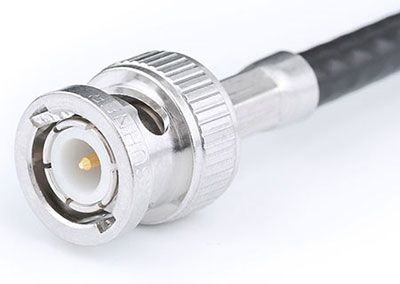 Figure 8: Developed during WWII, the BNC connector is still used and often found on test and instrumentation systems; both 50 Ω and 75 Ω versions are available with very similar appearance, but critical dimensional differences. (Image source: Wikipedia)
Figure 8: Developed during WWII, the BNC connector is still used and often found on test and instrumentation systems; both 50 Ω and 75 Ω versions are available with very similar appearance, but critical dimensional differences. (Image source: Wikipedia)
Conclusion
In the RF world, working with the nominal design impedance to effectively and efficiently convey valuable RF energy from a source to its load is a non-trivial challenge in most cases. That’s especially the situation when there are two legitimate choices for transmission line impedance, each with its own attributes for the targeted scenario. Choose carefully, especially when developing the BOM.
Related DigiKey Content
1: Understanding the RF Balun and its Transformative Function
https://www.digikey.com/en/articles/understanding-the-rf-balun-and-its-transformative-function
2: Beyond Wires: Antennas Evolve and Adapt to Meet Demanding Wireless Requirements
https://www.digikey.com/en/blog/beyond-wires-antennas-evolve-and-adapt
3: Understand the Fundamentals of Coaxial Adapters to Make Better Use of These Very Useful Components
https://www.digikey.com/en/articles/understand-the-fundamentals-of-coaxial-adapters
4: Antenna Matching Within an Enclosure: Theory and Principle
https://www.digikey.com/en/articles/antenna-matching-within-an-enclosure-theory-and-principle
5: Antennas: Design, Application, and Performance
https://www.digikey.com/en/articles/antennas-design-application-and-performance
6: How to Select, Use, and Maintain Coaxial Connectors for RF Applications
https://www.digikey.com/en/articles/how-to-select-use-maintain-coaxial-connectors-rf-applications
7: Understanding Antenna Specifications and Operation, Part 1
https://www.digikey.com/en/articles/understanding-antenna-specifications-and-operation
8: Understanding Antenna Specifications and Operation, Part 2
https://www.digikey.com/en/articles/understanding-antenna-specifications-and-operation-part-2
9: Understanding and Choosing GHz-Range Coaxial Connectors and Cable Assemblies
10: The Smith Chart: An ‘Ancient’ Graphical Tool Still Vital in RF Design
Related References
- U.S. Patent 1,835,031, “Concentric Conducting System”
- Belden, “50 Ohms: The Forgotten Impedance”
- Tech Play On, “Why is the characteristic impedance of RF transmission lines kept 50 ohms?”
- Altium, “The Mysterious 50 Ohm Impedance: Where It Came From and Why We Use It”
- Microwaves 101, “Why 50 Ohms?”
- Power Signal, “Should I buy a 50‑ohm or a 75‑ohm cell signal booster?”
- Solid Signal, “Which is better: 50 Ohm cable or 75 Ohm cable?”
- Ham Stack Exchange, “Using 75 Ω instead of 50 Ω coax feed”
- Wikipedia, “Coaxial cable”

Have questions or comments? Continue the conversation on TechForum, Digi-Key's online community and technical resource.
Visit TechForum










 中国
中国